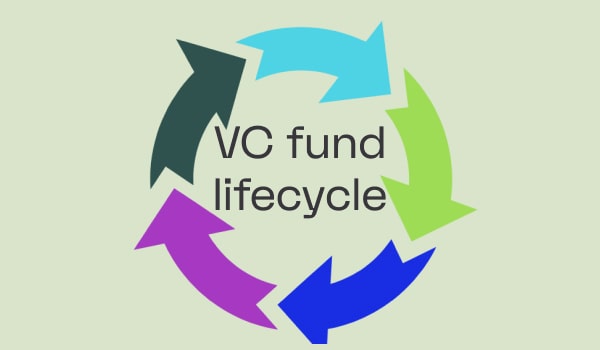It is no surprise that amidst continuing supply chain disruptions and the Russian invasion of Ukraine, there have been significant impacts on the global economy. These supply-side constraints, which are worsened by rising oil, commodity, and energy costs, have put unprecedented upward pressure on prices. As of April 12th, 2022, gasoline prices have risen 48% compared to last year, whereas fuel oil has increased by 22%. Given that fuel and oil are universal raw materials used as inputs in most industries, the war-led price surge will have several consequences on the financial markets.
Compared to the historically low inflation that has persisted in the US economy, this sudden surge in the price levels has put the focus on inflation. A persistently high inflation rate is a serious concern for the economy as the currency's purchasing power erodes. This fall in the “real” value of money can adversely impact the real economy by making necessities such as food and electricity expensive for consumers, increasing operational costs for businesses, and creating a general atmosphere of uncertainty.
Financial markets are sensitive to the events and occurrences in the real economy, especially to the impacts of macroeconomic variables such as inflation. In addition, even private markets, i.e., private equity and venture capital, are not immune to such events. Although private financial markets tend to respond to any external impact slower than public markets, rising and persistent inflation will affect liquidity in the market, impacting limited partners (LPs).
The central bank response - rising interest rates
For the financial markets, the critical concern isn’t inflation but the indirect impact of the central bank’s response to high inflation, which will trigger a contractionary monetary policy. Generally, central banks increase interest rates due to rising inflationary pressure to prevent the economy from overheating. The reasoning is that rising rates make the cost of raising capital higher due to an increase in the cost of borrowing, slowing down the economy by reducing aggregate demand and easing the inflationary pressure on prices.
Most traditional valuation methods employ a discounted cash flow model, which includes finding the current value of the future cash inflows of a potential venture. A “discount rate” is used to arrive at the current value of future cash flows. This rate, intimately linked to the interest rate, is used to find what a certain value in the future is worth today.
A higher overall interest rate translates to a lower current value of all future cash flows. Hence, once highly valued startups will witness a rapid decline in their valuation if interest rates consistently rise, implying that investments in these ventures are susceptible to interest rate risk, making valuation extremely volatile.
As a venture capitalist, the biggest risk for you is the weaker public market. When markets persistently rise, you will find it easier to make a strong exit on your more mature investments. This exit opportunity usually comes in the form of an IPO when the venture finally goes public.
However, a lower valuation could jeopardize the performance of the company when it gets listed on the public market. In one of the biggest examples of this in recent times, WeWork’s unsuccessful IPO affected SoftBank’s fundraising for Vision Fund 2. Hence, the impact of inflation, through the channel of increased interest rates, on valuations and exit opportunities is a cause for worry.
Lastly, when interest rates rise, the fixed-income or bond market becomes relatively more attractive to institutional investors than the stock market or the private market. Higher interest implies that virtually risk-free government treasuries offer higher rates of return to investors. Given that capital is limited and there is a tradeoff between the private and the bond markets, institutional investors might reduce the funding for VC firms in favor of risk-free government treasuries.
The problem is not immediate because your VC fund is close-ended, and investors cannot suddenly pull out their capital. However, an attractive debt market will make your future fundraising rounds more challenging. To counter this, you can look at including a clause about capital calls. This has been shown to reduce the number of times that LPs decline to commit money because of the severe ramifications.
On the flip side, a higher rate indicates a higher cost of borrowing. As raising capital through debt in the form of bank loans and issuing bonds becomes more expensive, entrepreneurs will shift focus towards raising capital from VC firms. As the demand for VC funding increases, you are likely to see increased deal flow.
This increase will allow you to diversify your portfolios across more companies and industries to minimize your risk and maximize your reward. In conclusion, the demand side of the VC market will remain strong and present multiple opportunities, even in the case of inflation and, consequently, rising interest rates.
The direct impact of inflation
Running an early-stage start-up is extremely difficult. Due to a lack of organizational structure, limited networks, and expertise, combined with operational inefficiencies and a small customer base, generating a net positive cash flow is tough. These internal, firm-specific factors are only made worse when combined with the external impact of inflation, which adversely impacts the entire economy.
Cost-push inflation, driven by rising commodity and energy prices, makes the operational functioning of the venture even more challenging. As input prices rise, marginal costs increase, and generating a net positive cash flow becomes a distant dream. Moreover, firms make marginal profits in the early stages, if any. Hence, even slight increases in costs can severely impact your startup investments.
If inflation is driven by increases in prices of “needs,” such as food and energy, individuals and businesses in the economy will have lower leftover income and profit. Falling disposable income for consumers to spend and lower profits for businesses to invest implies a contraction of aggregate demand in the economy. In such an uncertain and depressive time, startups can face acute demand-side shortages and a reduced consumer base, further reducing profitability. This might make it harder for you to see a return on your investment.
How can you mitigate risk?
While it is more challenging to mitigate interest rate risk, the direct risk imposed by inflation is manageable. The immediate response should be to understand your portfolio and verify the amount of exposure it has to inflation. Not all firms will be impacted by rising input prices or declining demand in the same manner. For example, inventory-heavy startups are more exposed to inflation, as demand-side shortages will result in inventory sitting for longer while the fixed cost of storage increases. Similarly, certain tech startups might be vulnerable to rising input prices as electricity and energy become more expensive.
The simple answer to this question is diversification; however, what kind of diversification would be needed, and to what extent? Investing in the right mix of ventures that cater to individuals and businesses can mitigate the risk of contracting demand.
Some startups have lower exposure to rising costs of inputs. Creative business models, nuanced supply chain operations, and novel technology can give such ventures a competitive edge when other firms suffer from increased costs. While these firms might be high risk on average, they will moderate the volatility of your investments in scenarios of inflation.
If you are looking for ways to diversify your investments or manage your portfolio companies better, we are the perfect solution. Zapflow is a venture capital CRM software that facilitates quick and efficient communication with portfolio companies and helps you discover new companies through our partnership with Ocean.io.
Get in touch today!



